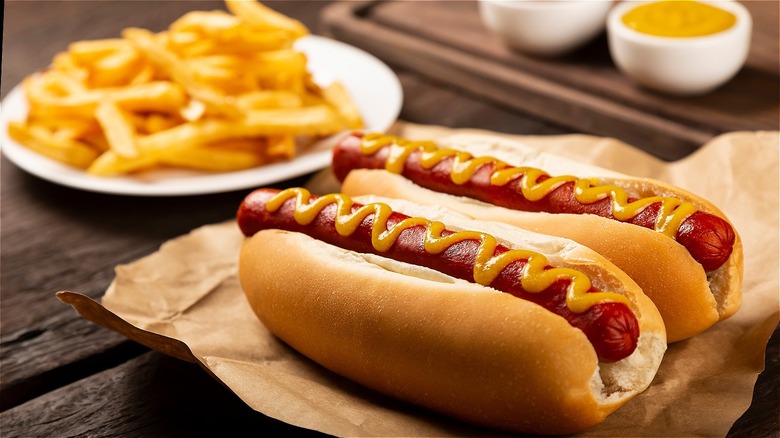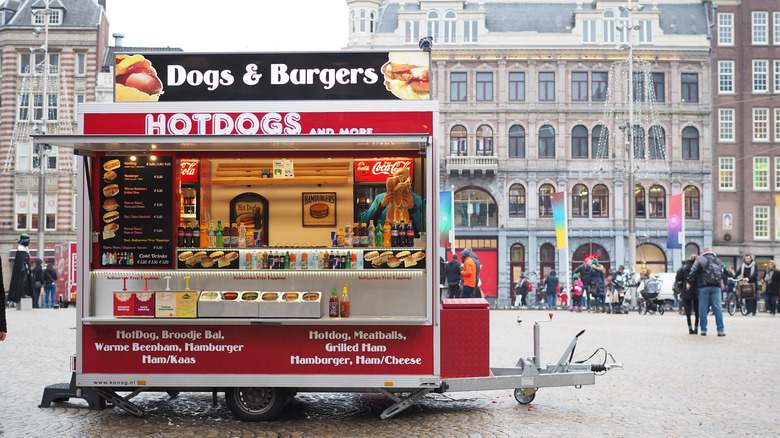Why Aren't There More Hot Dog Fast Food Restaurants?
There are few things more American than hot dogs. According to the National Hot Dog and Sausage Council, an estimated 20 billion hot dogs are consumed by Americans each year, which equals 70 hot dogs per person. Of these, nine billion are purchased in-store, 15% are sold from street vendors, and nine percent are bought at sporting events. Further statistics show that of all the United States cities, folks living in Los Angeles, New York City, Dallas, and Chicago consume the most dogs, and on Independence Day, Americans go through a whopping 150 million hot dogs.
With the quality of hot dogs sold in America's ballparks, it's no wonder that 19.4 million were sold throughout stadiums in 2020. Oftentimes, people tend to prefer these hot dogs more than the homemade variety. In a Quora thread, one user asked, "Why does a hot dog taste better at a baseball game?" A commenter on the post believed that it has to do with the high quality. "Most ballparks are using higher quality dog which is absolutely filled with salt – a flavor most of us like. All the condiments and buns are fresh because they have to be just to keep up," they wrote. They also pointed out that ballpark hot dogs are steamed rather than grilled.
With this information, it makes sense to ask why concession stands are able to nail the recipe that fast food restaurants can't.
Hot dogs are harder to grill
Many have attempted, but very few fast food restaurants have kept hot dogs on their menu. In 1995, McDonald's tested out McHotDogs, which founder Ray Kroc eventually pulled because he wasn't sure of the quality of their ingredients (via The U.S. Sun). Burger King made an attempt, which the New York Post dubbed "limp" and a "disgusting disgrace." Sonic sells hot dogs, but per Fast Food Nutrition, they don't even make the top 20 most popular list.
University of Guelph professor Mike von Massow explained to Mel Magazine why it's difficult for these establishments to perfect the hot dog. "Most of these quick service restaurants are set up to grill burgers, and grilling a hot dog is more difficult than grilling a burger," he began. Hot dogs take more effort to cook evenly due to their shape, and their cook times are more precise in regards to their freshness. "None of us expect a good experience from [a microwaved or roller-heated hot dog]. Most of these big burger chains don't want to just give you fuel. They want you to have a good experience," he said. Furthermore, hot dogs differ drastically from city to city, so the product ordered in New York will be different than the one whipped up in Chicago.
This makes it difficult to cater to everyone's taste. This doesn't mean there aren't places to get a good hot dog, it just means they may be a bit harder to find.

